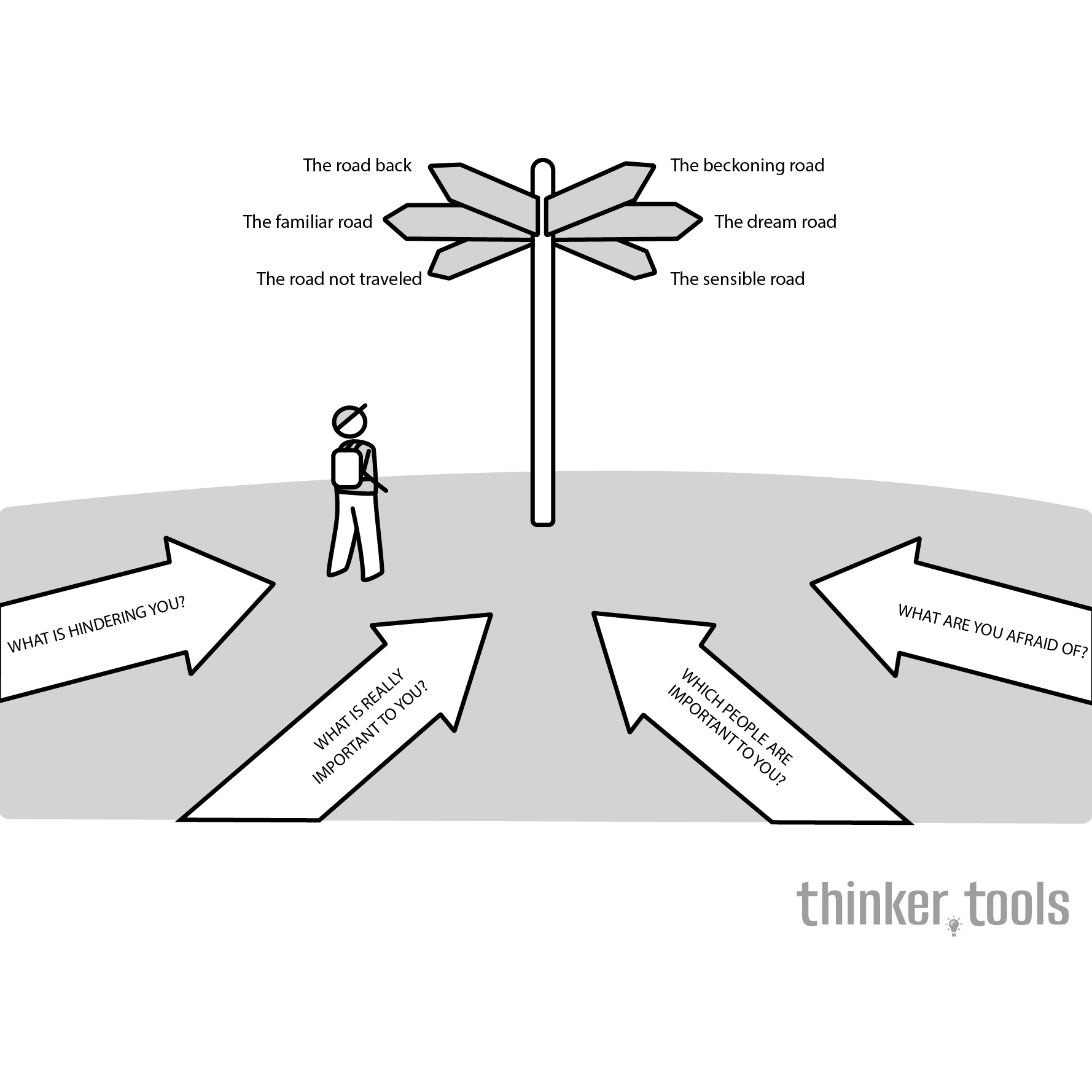
What is the Crossroads Model?
The Crossroads Model is a decision-making framework that treats choices as literal crossroads, where multiple paths diverge from your current position. Rather than rushing to choose, this model emphasizes pausing at the intersection to thoroughly explore each possible route through visualization, research, and reflection. It transforms abstract decisions into concrete journeys you can mentally travel before physically committing.
The Origin and Philosophy
While crossroads have served as metaphors throughout human history, the structured Crossroads Model emerged from career counseling and life coaching practices in the late 20th century. It draws inspiration from Robert Frost's "The Road Not Taken" and ancient wisdom traditions that emphasized the importance of contemplation before action. The model recognizes that we often make better decisions when we can vividly imagine ourselves living with the consequences of each choice.
How to Use the Crossroads Model Step by Step
1. Identify Your Crossroads
Clearly define the decision you're facing. What are the distinct paths available to you? Most crossroads have 2-4 main paths, though some may have more.
2. Map Each Path
For each option, create a detailed map:
- Immediate destination: Where does this path lead in the short term?
- Long-term destination: Where might you end up in 5-10 years?
- Terrain: What challenges and opportunities lie along this path?
- Resources needed: What skills, time, money, or support does this path require?
- Travel companions: Who will join you or leave you on this path?
3. Walk Each Path Mentally
This is the model's core practice. For each path:
- Close your eyes and imagine taking the first steps
- Visualize yourself at various points along the journey
- Notice how you feel at each stage
- Imagine both best-case and worst-case scenarios
- Pay attention to your emotional and physical responses
4. Gather Intelligence
Research and speak with others who have traveled similar paths:
- What did they learn?
- What surprised them?
- What do they wish they had known?
- Would they choose the same path again?
5. Return to the Crossroads
After exploring each path, return mentally to your current position. With the knowledge gained from your explorations:
- Which path aligns best with your values?
- Which journey excites you most?
- Which destination truly calls to you?
- Which path feels most authentic?
6. Make Your Choice
Select your path with confidence, knowing you've thoroughly explored your options. Remember that few decisions are irreversible—many paths have connecting routes.
Practical Examples
Career Transition: Sarah, a marketing manager, faces three paths:
- Path 1: Accept a promotion to director (more money, more stress)
- Path 2: Start her own consulting firm (freedom, uncertainty)
- Path 3: Pivot to teaching (purpose, lower income)
She spends a week visualizing each path, shadowing a director, interviewing consultants, and guest teaching a class. The mental journey down each path reveals that while the promotion seems logical, the consulting path energizes her most.
Relationship Decision: Marcus stands at a crossroads with his long-distance relationship:
- Path 1: Move to be with his partner (new city, leave support network)
- Path 2: Ask partner to move to him (partner sacrifices career)
- Path 3: Continue long-distance (maintain status quo, ongoing challenges)
- Path 4: End the relationship (immediate pain, future freedom)
By walking each path mentally and discussing scenarios with his partner, Marcus discovers creative solutions he hadn't considered, like alternating locations every six months.
Benefits and Life Impact
The Crossroads Model transforms decision-making from a source of anxiety into an adventure of discovery. Its benefits include:
- Reduces decision paralysis by providing a clear process for complex choices
- Minimizes regret through thorough exploration before commitment
- Reveals hidden options as you may discover paths you hadn't initially seen
- Builds decision-making confidence through systematic evaluation
- Honors intuition and logic by combining emotional and rational assessment
- Creates ownership of your choices through deep engagement with each option
By treating decisions as crossroads to be explored rather than problems to be solved quickly, this model helps you make choices that align with your deepest values and aspirations. You'll find yourself less likely to wonder "what if" because you've already traveled those alternative paths in your mind. The Crossroads Model doesn't guarantee perfect decisions, but it ensures thoughtful ones—choices made with eyes wide open to both the journey and the destination.